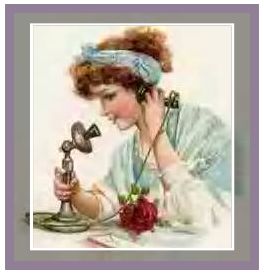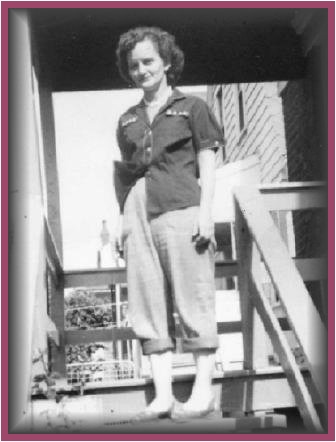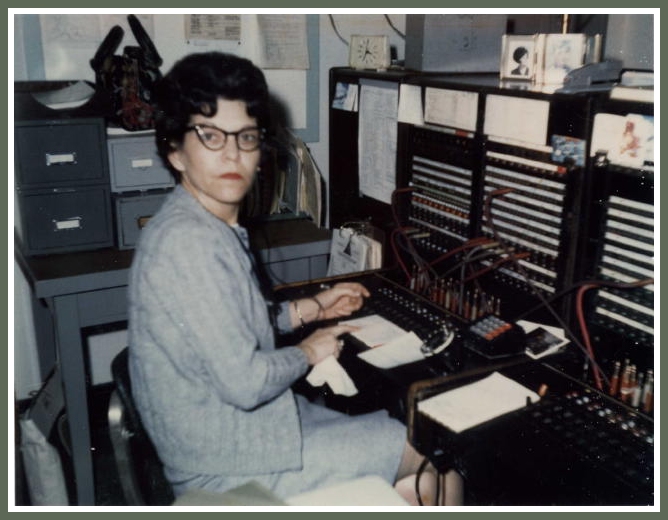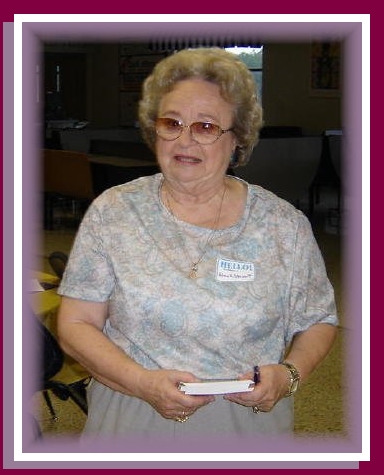
In the mid nineteen-forties the small town of Rockport needed telephone service. In
order to obtain this service a few citizens were elected to the "Telephone Service
Board". They worked together and before the year was out, a few of the residents
were lucky enough to have a working telephone in their house. From about nineteen
hundred and forty-seven until now, a period of about sixty years, telephone service
to Rockport can be broken down into three types of service. The first type of service
was a "Switchboard Operator" type system. Then, Rockport changed to a "Party Line"
system. After the "Party Line", the "Private" line served the town well. Now, most
of the residents have a fourth type service, cell phones.
Telephones, prior to the Cell Phones, worked by having two phones tied together by
conductors or small wires where the electric signal could travel back and forth from
one phone to another. The person speaking into the phone mouthpiece caused a small
generator to vibrate in tune with the energy spoken into the phone. This small
generator produced an electrical signal that traveled over the phone lines to the
receiver which contained a small speaker. The speaker would vibrate, in tune with
the electrical signal from the transmitting phone, and reproduce the sound from the
earpiece of the receiving phone.
In 1947 Rockport was experiencing some growth. A new mine had just opened in the
Echols area, a new highway bridge had been built to span the Green River and river
and rail traffic were increasing. People were moving into Rockport and the town was
growing. What this town needed was phone service. Jimmy Blair had been appointed
chairman of the "Rockport Phone Service Board" and his work and the work of the
board was about to reap some benefits. Jimmy Blair received the first phone and H.
D. Bailey received the second. I think that the first system was made to work from
the Blair house. It would be a few years before most people in Rockport would have
a phone in their home, but at least a plan had been put forth and a start had begun.
As mentioned earlier, in order for a phone to work, there needs to be two phones
that are connected by wire to each other. The sending part of the phone must be
connected to the receiving part of the other phone and vice-versa. To accomplish
this, each phone must be connected to a local "Switching Unit". From this "Switching
Unit", a connection can be made to tie one phone line to another. In the early years,
this switching was done by a "Switchboard Operator". The "Switchboard" is a panel
where the "Operator" can manually connect one phone to another or make a connection
to a "Long Distance" line. As wires were being installed to each house from a central
location, called an "Exchange", the house could now have a phone installed. Once a
house was wired and a phone added, the user could now make contact with the "Switchboard
Operator" and from there, the call could be made locally or it could be "Long Distance"
and tied into a main switchboard and from there it could be routed to anywhere that
had phone service. Now, Rockport was on the move.
In just a few short months, several phone systems had been added to the new Rockport
Phone System. The "Switchboard" was also moved in this time frame. Sister Louise had
the first switchboard that I am aware of and this must have been in about nineteen
forty-eight, maybe nineteen forty-nine. She lived in the big two story house across
from the old bank building. Sister Louise operated this "Rockport Exchange" for
about five years and in about nineteen fifty-two, the switchboard was moved to the
Bowser Brown house with Cora Mae Brown becoming the new switchboard operator. They
lived in the big two story house that Billy and Louise Stevens live in today. It
was across "Old Main Street" from Mrs. Rose Maddox. Cora Mae kept the "Switchboard"
in her house until Rockport went on the "Party Line" system.

Cora Mae Bannon Brown, an early Rockport Switchboard Operator.
I don't have a picture of Cora Mae Brown working her "Switchboard". I wish that I
could present one. Will have to let this picture represent the "Local Switchboard
Operators" for the time being.
As time evolved and electronics improved, the old manual exchange system was replaced
by an automatic switching system. In the late nineteen fifties, Rockport was switching
over to this "Automatic Exchange" system. At first, the system was somewhat crude,
but an improvement on the old system. Rockport, by now, had updated to a "Party Line"
system. I think that originally, it was an eight party system where up to eight phone
lines would be tied together and tied into the "Exchange" with one phone line. Now,
one person on that "Eight Party" system could make a phone call if the line was not
being used by another customer. Not only that, but anyone on that "Party Line" could
listen in on the conversation of anyone on that single line. The individual phone
lines were separated into a "Four Party" line for receiving. Now, when a person was
calling an individual number, they would dial a phone number, for instance BR-549,
like the old Junior Samples number of the old "Hee Haw" TV program. Each party member
would hear the ring, but each member had an individual ring, like "Three Shorts". In
other words, if your "Ring ID" was three short rings, you would be the one being
called. Now was that not some kind of a phone system.
Just as soon as more phone lines could be installed, this old "Party System" fell
the ways of the horse and buggy. Probably, in less than five years, everyone in
Rockport was tied into a "Private Line" type system and most were happy. Those that
like to listen to others on their "Party Line" were disappointed, but soon got used
to the new system.
The "Local Exchanges" were automated several years before the "Regional Exchanges"
and the "Switchboard Operators" at the central exchanges were still being used and
would be able to work as "Switchboard" operators for several more years. Remember,
how a person would be able to dial the five digit numbers (BR-549) and be connected
to a local phone, but had to dial the operator (0) to call a "Long Distance" number.
Eventually, the last "Switchboard Operator" would be without a job, but that would
take a few more years.

Mabel Durbin DeNoon-Switchboard Operator Extraordinaire!
Picture probably taken
in the early sixties.
The above photo shows an "Operator" at her work station and will give one an idea
of what a switchboard looked like. This "Operator" is Dotty's oldest sister and the
picture was made in Kansas.

Hilma Aston Stewart-The Ultimate Switchboard Operator. Hilma worked the Owensboro
Exchange. She started out with the Central City Exchange and had a chance to transfer
to Owensboro.
